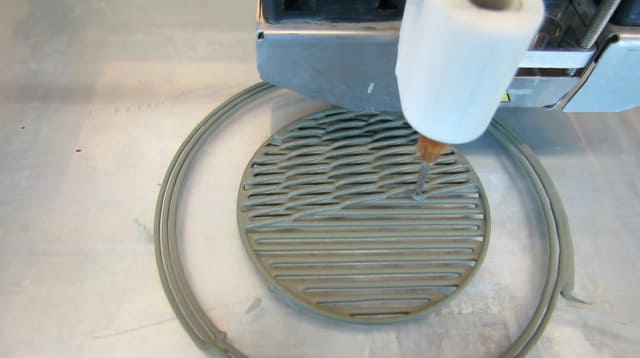3D-Printed Cement Paste Uses Biomimicry to Strengthen After Cracking
Emily Pollock posted on October 15, 2018 |

Purdue University’s Concrete 3D Printing Team developed a method of printing cement paste in patterns inspired by organic structures. (Image courtesy of Purdue University Concrete 3D Printing Team/Mohamadreza Moini.)
Researchers from Purdue University have 3Dprinted cement paste that becomes stronger under pressure, based on the structure of arthropod shells.
Bouligand structures are tiny microstructures composed of a series of layered fibers, with each layer rotated slightly from the one above it, forming a kind of “spiral staircase” (see above). Materials containing Bouligand structures, like the inner cuticle of arthropod shells, are stronger because of the way they crack. The cracks grow in twisted patterns following the direction of the fibers, and the material’s structure has “sacrificial links” that can be broken without weakening the structure of the overall system. As a result, the layers reorient, allowing the material to achieve greater toughness. Essentially, the “crackability” of the material actually becomes a strength, spreading the damage over more of the material to prevent localized damage.
Civil engineering PhD student Mohamadreza Moini and his team used these structures in their new 3D-printable cement paste, an essential ingredient in concrete and mortar. “3D printing cement-based materials provides control…

